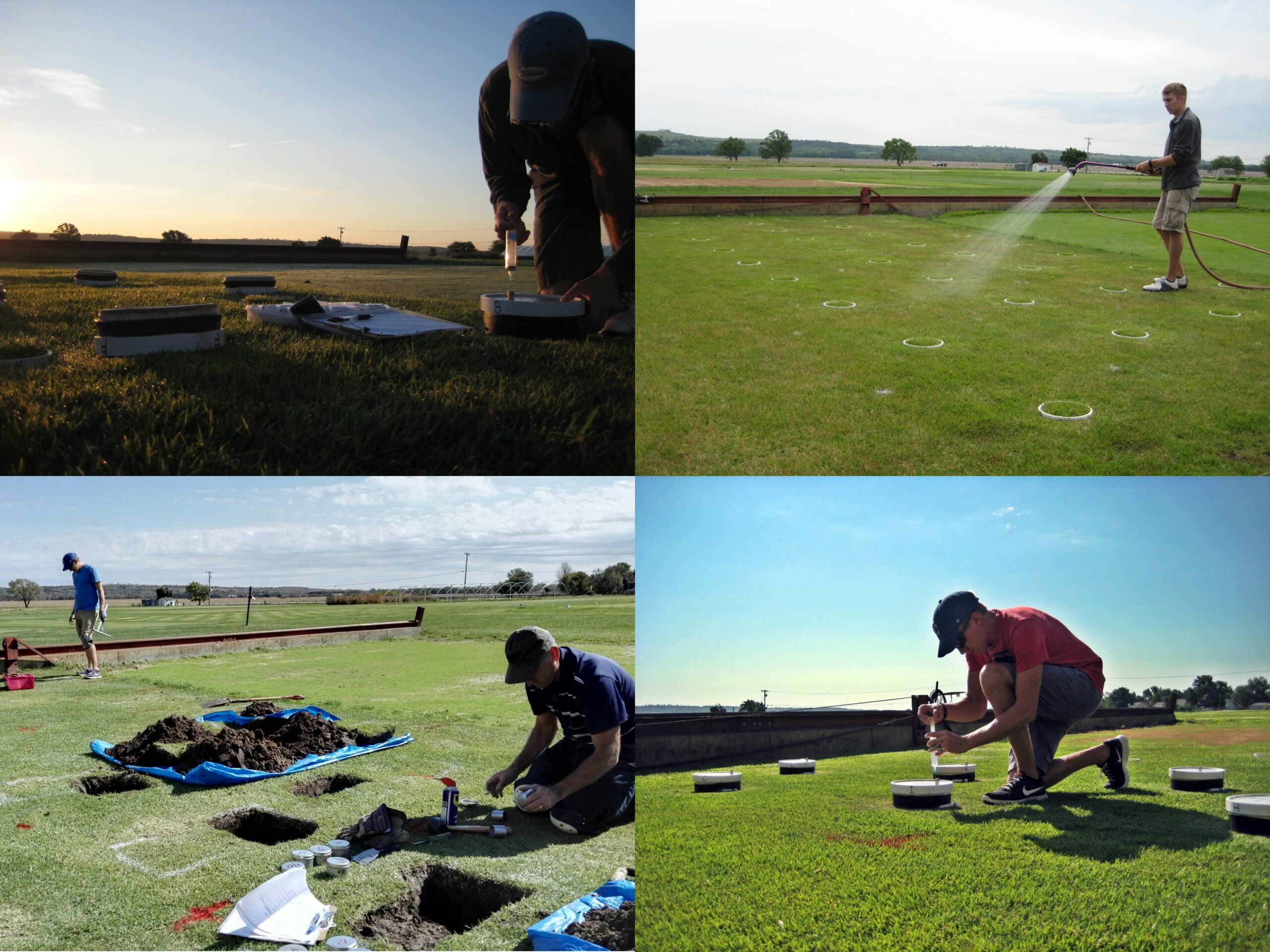6 Ways to Cut Back on Greenhouse Gas while Cutting Your Grass
This is the first article in a three-part series on turfgrass emissions, reduction strategies, and ecosystem services based on this article published in Crop, Forage & Turfgrass Management. Check out the second article, “How Can I Reduce Turfgrass Fertilization, Mowing, Irrigation, and Pesticide Use?” or the third, “What Are the Potential Ecosystem Benefits of Turfgrass?”
The short answer: Like agricultural soils, turfgrass systems receive fertilizer and other maintenance inputs (mowing, irrigation, pesticides) that are potential sources of greenhouse gas (GHG) emissions.
The big picture: Turfgrass systems include home lawns, commercial properties, golf courses, athletic fields, roadsides, sod farms, parks, and other green spaces. For the remainder of this article—even if you just have a handkerchief-sized front lawn—consider yourself a turfgrass manager.
- Greenhouse gas emissions from turfgrass maintenance or agricultural activities are commonly expressed in carbon dioxide equivalents (CO2e), which accounts for the global warming potentials of different greenhouse gasses, such as nitrous oxide (N2O) and methane (CH4) in comparison to CO2.
- Global warming potential accounts for the different radiative properties of greenhouse gasses; for example, CO2 has a global warming potential, or CO2e, of 1, while N2O and CH4 are estimated to be 275-300 and 27-30 CO2e over 100 years, respectively.
- Why does it matter? Greenhouse gas emissions trap longwave infrared solar radiation in the atmosphere, which results in a heating effect, much like the warming effect observed in a greenhouse.

Turfgrass scientists measuring nitrous oxide (N2O) emissions and soil organic carbon levels in turfgrass receiving distinct management-input regimes with different inputs of nitrogen fertilizer sources and irrigation amounts. Photos by Ross Braun.
Back it up: Nitrous oxide (N2O) emissions are a common by-product of natural soil processes of nitrification and denitrification; however, emission potential increases when agricultural soils, including turfgrass, are fertilized with or soil moisture levels increase from irrigation or precipitation. Increased soil moisture can create turfgrass soils that are waterlogged or anoxic—oxygen deficient—and lead to increased soil CH4 emissions. Deficit irrigation can help cut emissions from excess soil moisture.
Break it down: Like other agricultural systems, turfgrass emissions fall into three different “scopes,” including:
- Onsite emissions (combustion of gasoline from mowers and equipment);
- Offsite emissions produced as a result of onsite activities, such as electricity; and
- Offsite emissions produced from offsite activities, such as upstream supply chains.
Each scope presents opportunities for turfgrass managers and growers to decrease greenhouse gas (GHG) emissions.
Here are six strategies that can help decrease GHG emissions from turfgrass systems:
- Reduce maintenance inputs. Any decreases to fertilization, irrigation, mowing, and pesticide application will help reduce emissions.
- Grow “low-input turfgrasses,” which are turfgrass species or cultivars that require fewer inputs than traditional species.
- Incorporate deficit irrigation strategies. Deficit irrigation is an approach of irrigating turf in amounts less than the evapotranspiration that occurred to conserve water without compromising turf quality (including aesthetic and functional attributes) and the ecosystem services that turf provides.
- Use controlled-released N fertilizer. Controlled-release N fertilizer is not instantly available to the plant and is released slowly over time. This reduces its leaching potential, leaf burn potential, and decreases N loss to the atmosphere as N2O and other forms of N. A quick search for “controlled-release N fertilizer” will help you find sources. Most lawn and garden stores carry it!
- Try new technologies. Utilizing new technology such as rain sensors, soil moisture sensors, evapotranspiration (ET) data, and GPS technologies for mapping and targeted applications of irrigation and pesticides
- Transition to fully electric machinery. Using electric mowers and utility vehicles will help decrease emissions from the overall turfgrass system.
In short: Turfgrass systems encounter many of the same natural soil processes as other horticultural and agricultural systems, which unfortunately results in emissions of greenhouse gases. Turfgrass scientists have developed strategies to help decrease these emissions while still being able to provide the many ecosystem services (economic, environmental, and societal) benefits that turfgrass systems offer. By adopting even one or two of the tips above, you can help reduce GHG emissions from turfgrass systems.
Photo by Tim Mossholder.








